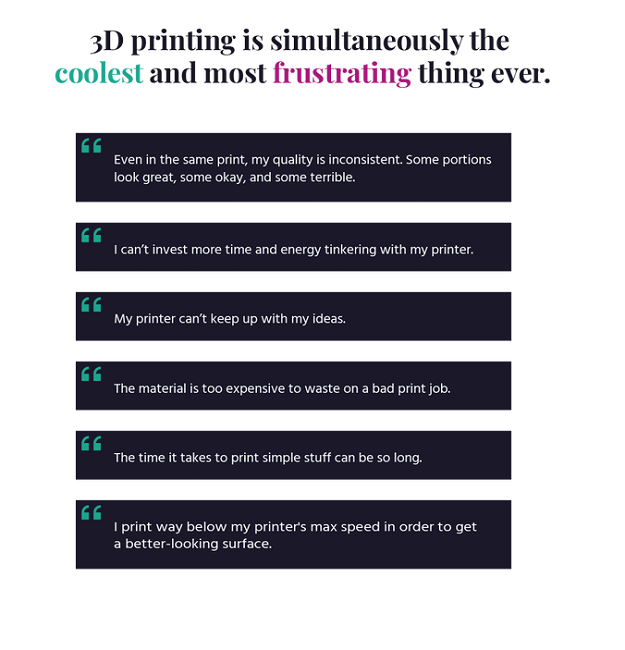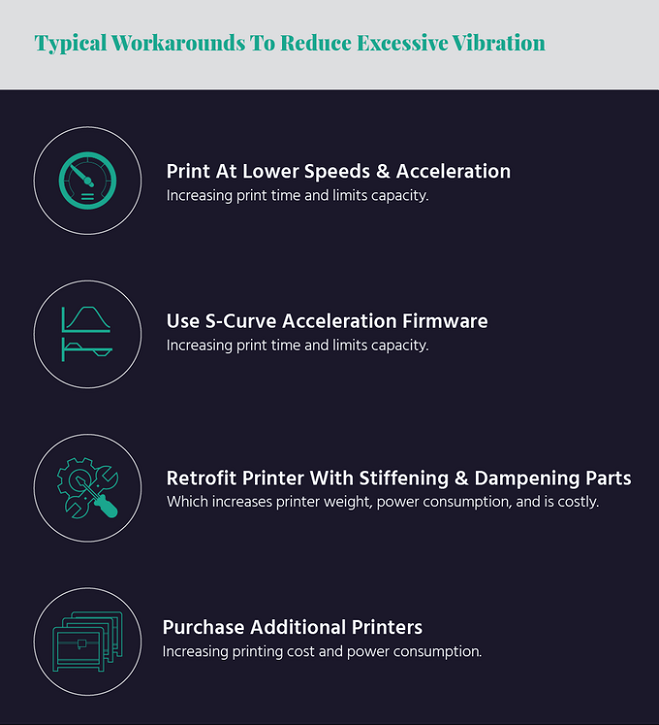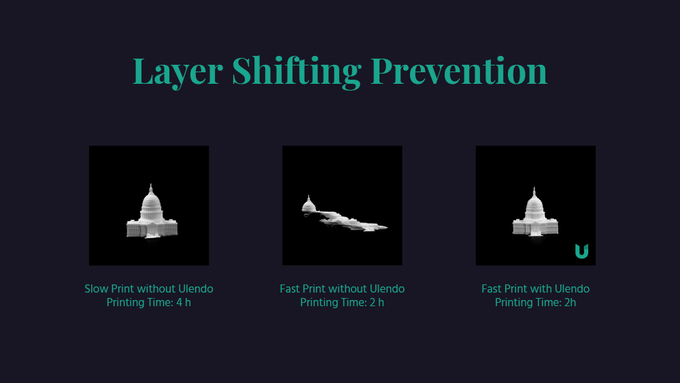In 2017, researchers with the Smart and Sustainable Automation Research Lab (S2A Lab) at the University of Michigan College of Engineering developed a filtered b-spline (FBS) algorithm that could help speed up 3D printing by regulating the vibrations. This week, S2A Technologies LLC, a spinoff company from the university’s mechatronics program, is launching a Kickstarter campaign for its software solution, called Ulendo, that they say will “unlock the creative potential of your 3D printer.”
“The COVID-19 situation further motivated us to get Ulendo into the hands of the 3D printing community as it showed us how crucial speed is when it comes to printing PPE and medical devices to combat the coronavirus,” the campaign states.
If you want to finish a print job faster, you might think that the way to do it is to run the system at a higher speed. However, this can cause excessive vibrations that result in noisy operation, poor print quality, increased wear and tear to the printer, and even failed prints. Vibrations can cause specific issues such as shifting layers, ringing, and parts detaching from the build plate, so in the end, speeding up the print process can end up costing you more time, not less.
According to the Kickstarter campaign, the only current solutions for reducing excessive vibrations are ones that increase cost, such as scaling production by purchasing more printers or retrofitting a printer with stiffening and vibration dampening parts, or increase print time, like using S-curve acceleration in firmware or printing at lower speeds. That’s why the research team created Ulendo.
The director of the S2A Lab, Chinedum Okwudire, an associate professor of mechanical engineering at the university, offered a very fitting explanation back in 2017 of how the algorithm works by comparing it to a person trying to give a speech to a large audience. The speaker would need to shout for people sitting far away to hear them without the use of a megaphone, but if they shouted through a megaphone, their voice would sound distorted and be too loud. If they use a megaphone and talk into it at a normal volume, their voice would resonate through the room quite clearly.
Ulendo, which means “journey” or “voyage” in the Bantu language of Chichewa, is a software for FDM 3D printing delivered as a service (SaaS) from the cloud, so you won’t need to upgrade any of your hardware to use it. According to the campaign, it “enables faster and more accurate printing leading to higher quality parts with less waste.”
“Ulendo is different from motion-smoothing algorithms like S-curve acceleration, available in some firmware, which reduces vibration by eliminating abrupt motions hence increasing motion time,” the campaign explains. “Instead, Ulendo compensates for vibration caused by abrupt motions, allowing faster printing without loss of quality.”
The software uses an advanced, patented algorithm, the one developed at the University of Michigan, called filtered B-splines, to compensate for 3D printer vibrations. Ulendo is similar to Astroprint or Octoprint: using a web browser that’s connected to the secure cloud platform, simply upload the gCode to your printer, whether you’re an OEM or using an industrial system or a desktop one. The software uses its knowledge of how the type of printer responds to different kinds of motion to appropriately modify the motion command for the optimal performance. The campaign explains that “this also means that we can push the printer to go even faster than would be safe to do without an optimized command.”
“The speed benefit that Ulendo provides scales proportionately with the size and complexity of the part. The larger and more complex the part, the more time you save printing it. In a nutshell, this is how Ulendo increases the production rate and improves the quality of 3D printed parts.”
The Ulendo team reports that its algorithm can increase print speed by up to two times, decrease print speed by up to 50%, maintain high-quality 3D printing, reduce general wear and tear, and decrease the noise of operation.
Ulendo can also offer cost savings, since no additional hardware or hardware modifications are needed, in addition to increased high-speed print motion. All you need is a Raspberry Pi, 3 and above, that’s connected to your 3D printer through a USB. Then, install Ulendo’s open source firmware on both the Raspberry Pi and the printer so they can connect to the cloud server running the software, and finally upload the part’s gCode.
The Kickstarter campaign for Ulendo kicked off this week and runs through January 7th, 2021. The team is conducting a survey to determine the most popular 3D printers among its users, and Ulendo will be brought to the top three choices. Customized firmware for the different printers will be delivered in a staggered fashion starting this May, and different types of users can choose from different rewards if they back the campaign. For example, the Enthusiast is for those just getting started with the technology and may have one printer, and Power User is for people who print frequently or monetize their systems, while Makerspace users have multiple printers and need multiple licenses.
Check out the white paper to learn more about how Ulendo works.
Subscribe to Our Email Newsletter
Stay up-to-date on all the latest news from the 3D printing industry and receive information and offers from third party vendors.
Print Services
Upload your 3D Models and get them printed quickly and efficiently.
You May Also Like
Reinventing Reindustrialization: Why NAVWAR Project Manager Spencer Koroly Invented a Made-in-America 3D Printer
It has become virtually impossible to regularly follow additive manufacturing (AM) industry news and not stumble across the term “defense industrial base” (DIB), a concept encompassing all the many diverse...
Inside The Barnes Global Advisors’ Vision for a Stronger AM Ecosystem
As additive manufacturing (AM) continues to revolutionize the industrial landscape, Pittsburgh-based consultancy The Barnes Global Advisors (TBGA) is helping shape what that future looks like. As the largest independent AM...
Ruggedized: How USMC Innovation Officer Matt Pine Navigates 3D Printing in the Military
Disclaimer: Matt Pine’s views are not the views of the Department of Defense nor the U.S. Marine Corps Throughout this decade thus far, the military’s adoption of additive manufacturing (AM)...
U.S. Congress Calls Out 3D Printing in Proposal for Commercial Reserve Manufacturing Network
Last week, the U.S. House of Representatives’ Appropriations Committee moved the FY 2026 defense bill forward to the House floor. Included in the legislation is a $131 million proposal for...




































